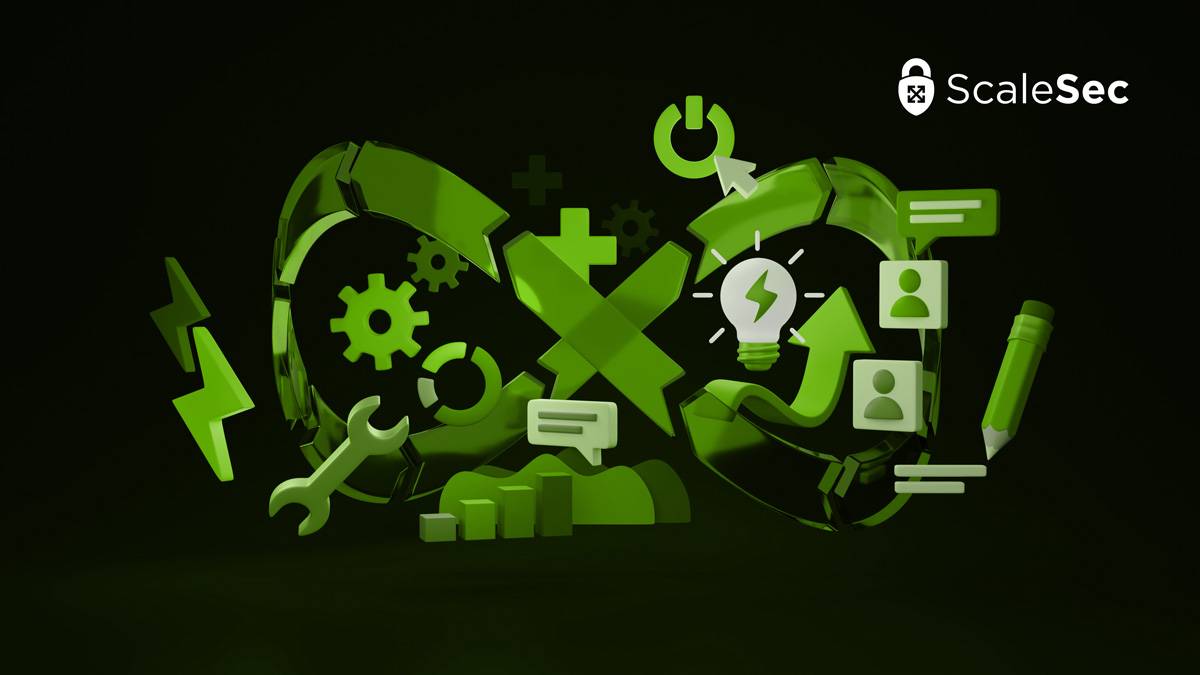
What is DevSecOps?
In today’s technology-driven world, security has become a critical concern for organizations of all sizes. The traditional approach of focusing solely on development and addressing security at the end of the process is no longer effective. Organizations need a way to deliver secure code fast. That’s where DevSecOps comes in.
What is DevSecOps?
DevSecOps is the abbreviation of Development, Security, and Operations. It’s an approach used to integrate security practices into the software development lifecycle. DevSecOps aims to ensure that security is considered early and continuously throughout the development process rather than being an afterthought or a separate workstream. DevSecOps requires deeper collaboration, automation, and shared responsibility among all business areas, including developers, security professionals, and operations teams.
Key Components of DevSecOps
- Code Analysis: Analyzing code for vulnerabilities and security flaws through static and dynamic code analysis tools.
- Change Management: Implementing change management processes effectively ensures security is maintained during development and deployment.
- Compliance Management: Ensuring adherence to regulatory requirements and industry standards throughout the development process.
- Automation: Automating as much as possible, including security tests, updates, scans, and configurations, allows developers to focus on innovation while keeping code secure.
- Threat Modeling: Identifying potential security threats and vulnerabilities by assessing the system’s architecture and design.
- Security Training: Providing developers and team members with the necessary security knowledge and skills to implement secure coding practices.
DevSecOps vs. DevOps: What’s the Difference?
DevOps focuses on collaboration and efficiency between development and operations teams through the software delivery process. However, security may still be thought of as a roadblock. To solve this, DevSecOps integrates security into the already automation-focused DevOps workflow. This is accomplished using techniques such as automated security tests, vulnerability scans, and configuration requirements. Ensuring all teams consider security from the beginning and throughout the development process, DevSecOps addresses security issues proactively.
The Importance of DevSecOps
Prioritizing security is crucial to address vulnerabilities effectively, ideally before they cause harm. Taking a proactive and integrated approach by implementing DevSecOps helps reduce risks and minimize the likelihood of security incidents and their associated reputational and monetary costs. By making security a fundamental and automated aspect of the development process, DevSecOps ensures that security is not an afterthought but an integral part of every step.
Benefits of Practicing DevSecOps
- Speed and Security: DevSecOps enables faster, more efficient software delivery while maintaining a strong focus on security. Organizations can avoid delays caused by security issues discovered late in the lifecycle by addressing security concerns throughout the development process.
- Ensuring Compliance: DevSecOps facilitates compliance with regulatory requirements and industry standards by incorporating security controls and guardrails into the development process. This provides for properly secured services right out of the box.
- Building a Security-First Culture: DevSecOps encourages a security-first mindset. The culture shift comes from the top down and flows through all facets of the business. This way of thinking fosters collaboration and shared responsibility regarding security.
- Security Uniformity & Standard Operating Procedures: Automation is a significant component of DevSecOps. Utilizing tools such as Policy as Code ensures consistency and reduces the chances of human error.
How to Build a DevSecOps Culture in Your Organization
To establish a thriving DevSecOps culture, organizations should focus on three key components:
- People: Foster a security-first mindset from the top down. Collaboration and cross-functional teams with security professionals, developers, and operations personnel are great ways to promote shared responsibility. Encourage continuous learning and provide security training to enhance the organization’s security awareness.
- Technology: Implement and integrate automated security tools and solutions into the development pipeline to identify and address security issues early in the process.
- Process: Establish clear security protocols, guidelines, and best practices, such as secure coding standards, threat modeling, and code review processes. Embed security checkpoints into the software development lifecycle.
Be Aware of These Challenges when Implementing DevSecOps
Implementing DevSecOps can bring significant benefits, but it has its challenges. Awareness of these challenges can help organizations navigate the implementation process more effectively. Here are two common obstacles associated with DevSecOps adoption:
- Resistance or Difficulty Embracing the Shift: Shifting to a DevSecOps culture requires a change in mindset and a shift in the traditional ways of working and thinking. Resistance to change and reluctance to embrace new security practices can be difficult. Developers and other team members may be accustomed to focusing solely on functionality and speed, and integrating security into their workflows may initially be met with resistance. In some cases, the security and DevOps teams may not work together at all yet. Overcoming this challenge requires support, education, training, and effective communication regarding the benefits of DevSecOps, emphasizing the importance of security and its positive impact on the organization. This mindset has to come from the top down and be integrated into every level of the organization.
- Integrating Complex Tools and Systems: DevSecOps relies on various security tools, technologies, and systems to automate security practices and identify vulnerabilities. Incorporating these tools into the existing development pipeline can take time and effort. Different tools may have varying compatibility requirements, and ensuring smooth integration without disrupting the development process can be a significant challenge. It is essential to carefully evaluate and select the right tools and technologies that align with the organization’s needs and infrastructure. Additionally, providing proper training and support to the team members responsible for implementing and managing these tools is crucial for successful integration.
Organizations can better prepare to implement DevSecOps by acknowledging and addressing these challenges. Taking a proactive approach, fostering a culture of collaboration and learning, and ensuring proper tools and team integrations will help overcome these challenges and drive the successful adoption of DevSecOps principles within the organization.
We would love to hear from you if you’d like to be more proactive in your security posture. ScaleSec is a proud partner with AWS, Azure, and Google Cloud. We can help you integrate security into all facets of your development lifecycle and adopt the DevSecOps model. Get in touch with us today!
